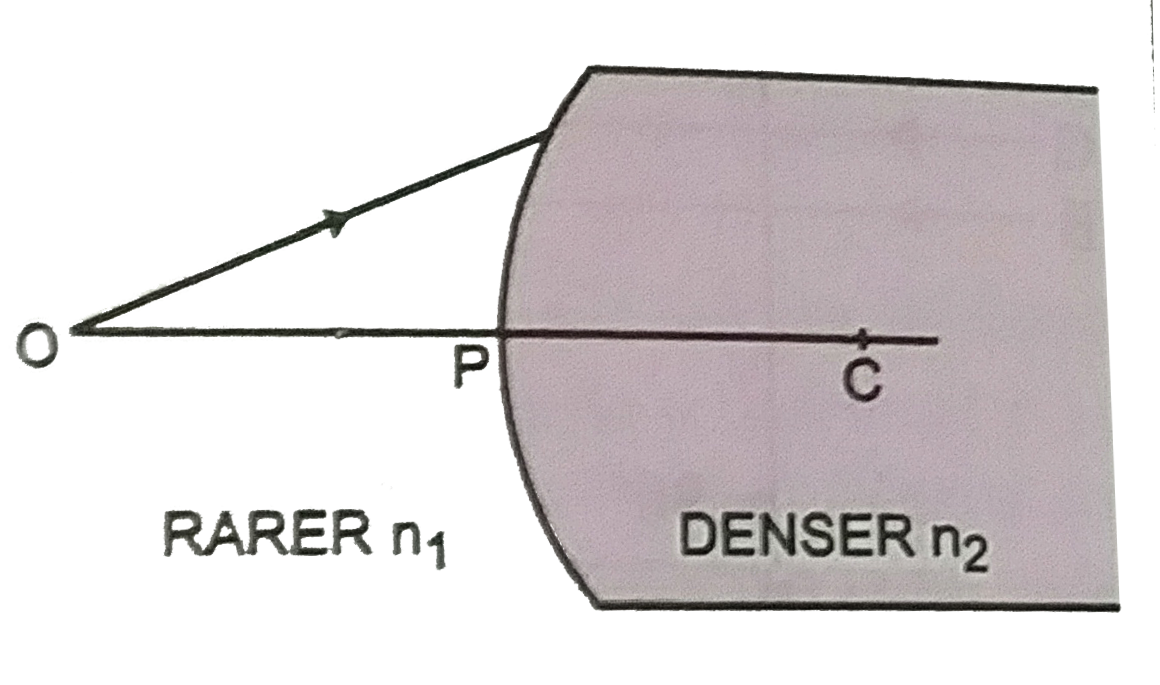Complete Solutions to Long Answer (b) of chapter RAY OPTICS of Class 11 book with complete answers and questions
| Class 11 | PHYSICS |
| Chapter | RAY OPTICS |
| PRADEEP | Long Answer (b) |
| Number Of Questions | 15 |
| Academic Year | 2023-24 |
What is meant by refraction of light ? State the laws of refraction. Show that emergent ray from a glass slab is parallel to incident ray.
View SolutionExplain the phenomenon of total internal reflection. What are the conditions for the phenomenon ? Explain the meaning of critical angle.
View SolutionShow by drawing ray diagrams how a totally reflecting glass prism can be used to deviate a ray of light through (i) `90^(@)` (ii) `180^(@)` and invert it.
View SolutionDefine total internal reflection. State its conditions. How do optical fibres transmit light without absorption.
View SolutionDescribe briefly any three applications of total internal reflection.
View SolutionProve that `(-mu_1)/(u)+(mu_2)/(v) = (mu_2 - mu_1)/( R)` when refraction occurs from rarer to denser medium at a concave spherical refracting surface.
View SolutionA spherical of radius of curvature `R`, separates a rarer and a denser medium as shown in Fig. Complete the path of the incident ray of light, showing the formation of a real image. Hence derive the relation connecting object distance `u`, image distance `v`, radius of curvature `R` and the refractive indices `n_1 and n_2` of the two media. Briefly explain how the focal length of a convex lens changes with increase in wavelength of incident light.
 .
.
View SolutionDiscuss briefly refraction from rarer to denser medium at a concave spherical refracting surface.
View SolutionDiscuss refraction from denser to rerer medium at a convex spherical refracting surface.
View SolutionDerive lens maker's formula for a thin convex lens.
View SolutionDerive lens maker's formula for a thin convex lens.
View SolutionDraw a ray diagram to show the formation of the image of an object placed between the optical centre and focus of a convex lens. Deduce the relationship between object distance, image disatnce and focal length of lens.
View SolutionDerive lens formula for a concave lens.
View SolutionA spherical of radius of curvature `R`, separates a rarer and a denser medium as shown in Fig. Complete the path of the incident ray of light, showing the formation of a real image. Hence derive the relation connecting object distance `u`, image distance `v`, radius of curvature `R` and the refractive indices `n_1 and n_2` of the two media. Briefly explain how the focal length of a convex lens changes with increase in wavelength of incident light.
 .
.
View SolutionObtain an expression for focal length of a combination of thin lenses in contact.
View Solution
Long Answer (b) questions and complete solutions for chapter RAY OPTICS of PRADEEP PHYSICS (HINGLISH) of Class 11
All Exercises from PRADEEP Class 11 PHYSICS RAY OPTICS
- (Competition)Comprehension
- (Competition)Multiple choice
- (Exemplar) Multiple choice
- (NCERT)Exercise With Solution
- (NCERT)Long Answer
- (NCERT)Short Answer
- (NCERT)Very Short Answer
- (Test Your Grip)Fill in the blanks (b)
- (Test Your Grip)Fill in the blanks (c)
- (Test Your Grip)Fill in the blanks (d)
- (Test Your Grip)Fill in the blanks(a)
- (Test Your Grip)Multiple Choice (b)
- (Test Your Grip)Multiple Choice (c)
- (Test Your Grip)Multiple Choice (d)
- (Test Your Grip)Multiple Choice(a)
- (Test Your Grip)Multiple Choice(sec -A)
- Assertion-Reason Question
- Conceptual Problem(a)
- Conceptual problem(b)
- Conceptual problem(c)
- Conceptual problem(d)
- Higher Thinking Order
- Integer Question
- Long Answer (a)
- Long Answer (b)
- Long Answer (c)
- Long Answer (d)
- Problem For Practice(a)
- Problem For Practice(b)
- Problem For Practice(c)
- Problem For Practice(d)
- Sample Problem(a)
- Sample problem(b)
- Sample problem(c)
- Sample problem(d)
- Short Answer(a)
- Short Answer(b)
- Short Answer(c)
- Short Answer(d)
- Solved Example(a)
- Solved Example(b)
- Solved Example(c )
- Solved Example(d)
- Very Short (a)
- Very Short Answer (b)
- Very Short Answer (c)
- Very Short Answer (d)